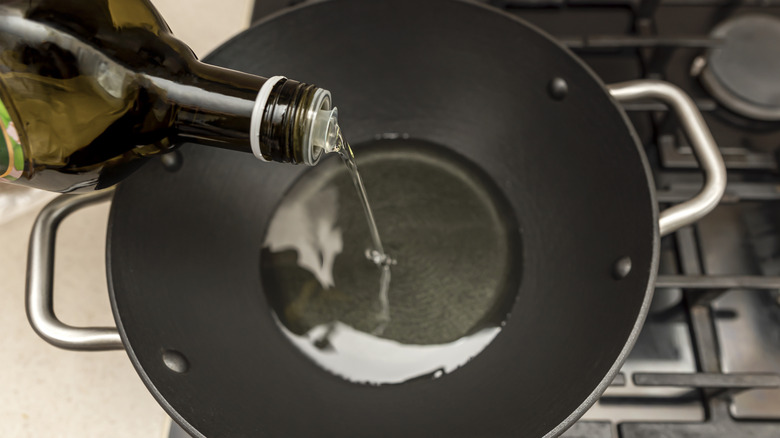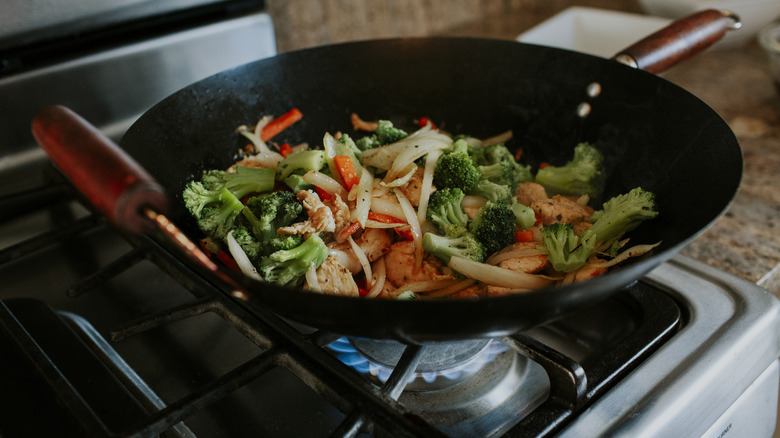The Best Technique For Stir-Frying Veggies So They Stay Crisp
Your market-fresh stir-fried veggies practically explode with the flavors of the season provided that you have the 411 on how to cook them correctly. The secret to achieving this is no secret at all. Rather, it's all about approaching your stir-frying tasks methodically and logically.
For your first stir-frying hack, cut your vegetables into small, uniform pieces. Doing this ensures that all the veggies in the pan reach the desired level of doneness at roughly the same time. There's a caveat to this rule, however. You should follow an order of operations of sorts, meaning that you also must put the veggies in the pan in a sequence that accounts for each vegetable's hardness level. Carrots, broccoli, and other hard veggies require more cooking time than your average handful of spinach or bok choy. Vegetables such as bell peppers, zucchini, and mushrooms fall somewhere in the middle. Throw the hardest veggies into the wok first.
If you're cooking proteins like chicken, shrimp, or tofu along with the vegetables, you'll use a similar approach. Since these items tend to be on the softer side, they'll go into the wok in the latter stages of cooking, around the same time that the soft vegetables go into the mix.
The role that heat and oil play in stir-frying
If you pay attention to the textures of the different veggies in your stir-fry, you'll enhance their flavors — even if you're just adding aromatics to crispy Thai basil beef. Some foods like broccoli or carrots taste best when they're crisp. Other foods like bok choy really shine if they're a bit soft. Fortunately, of all of the cooking methods, stir-frying is one of the easiest to control; unlike, say, baking, which requires the temperatures to be more exact in order for the food to turn out correctly.
In this case, how much or how little heat you have in the wok is something you influence directly. For stir-fry, you want a hot wok that cooks veggies quickly. A medium-high to high heat works best here, and allows you to brown the outsides of hard veggies and to draw out the Maillard reaction (the browning of sugars) in the process. The amount of oil you use generally aligns with the amount of food you have in the wok.
However, if you love the caramelly flavor and the crisp, slightly burned spots that come with the Maillard reaction, then you should limit the amount of oil you put into the pan. You should also put oil in the pan first to cook the vegetables, and then add any water or sauce after the veggies have browned to your liking.
The final stages of stir-frying vegetables
Steaming is the last stage in the stir-fry process. You need only add a squirt or two of water from a bottle. Think steam, not soup, if you're not sure about how much water to add. Additionally, during the steaming process, it's important to keep the vegetables moving around the pan. This prevents them from boiling in the water and subsequently turning them into mush as a by-product of the extra moisture.
Finally, keep in mind that there is a bit of an art to stir-fry. Any adjustments you make in the speed at which you toss the food around in the wok, how much or how little oil you add, the temperature you cook everything on, and the kinds of vegetables in the pan all play a role in how crisp everything comes out. While these rules of thumb will get you started down the right road, the best guarantee for crisp and flavorful stir-fried vegetables is practice — so make stir-fry often for the best results in the long run.


